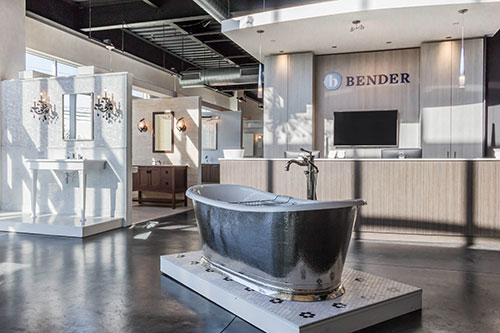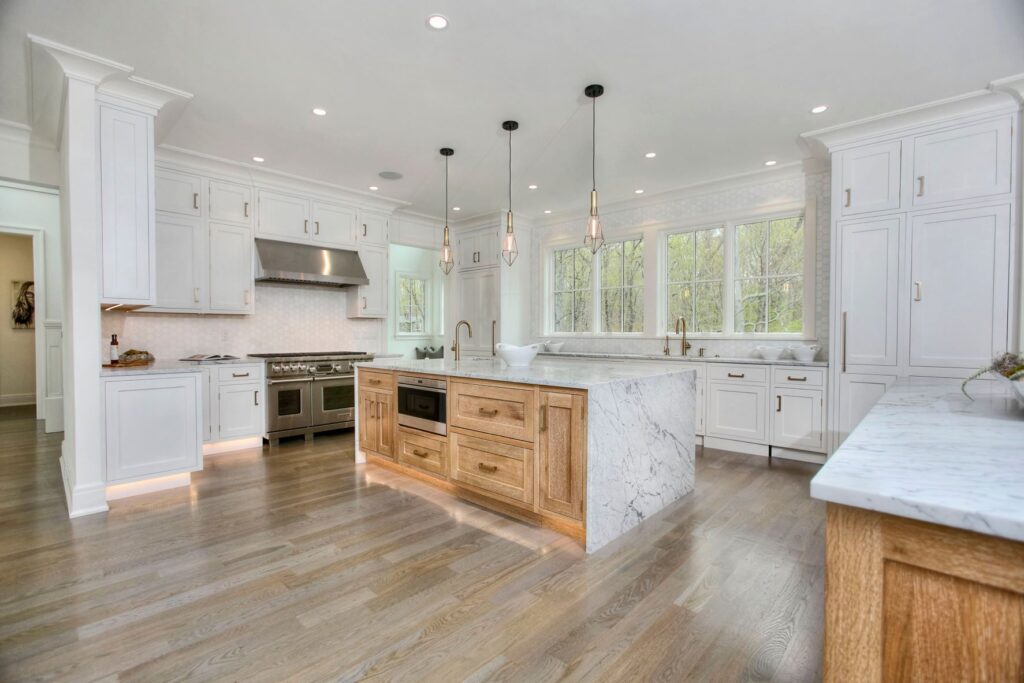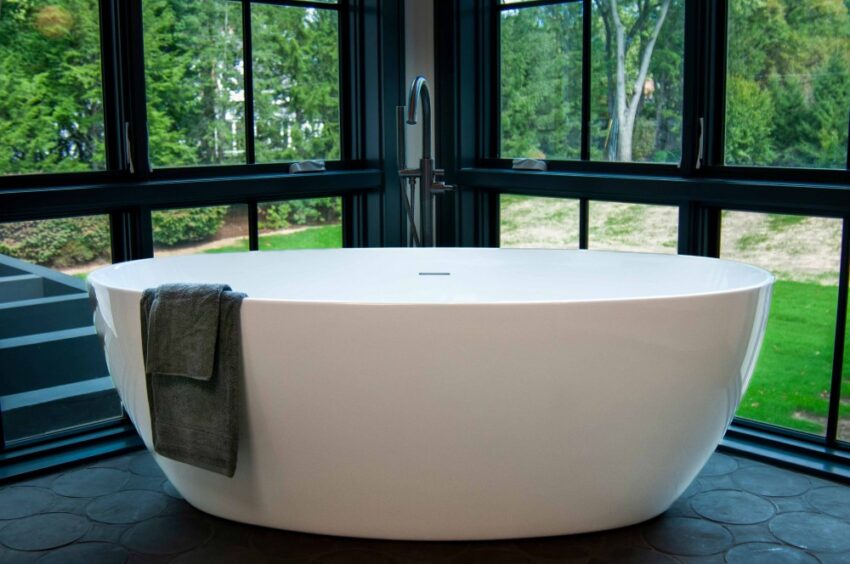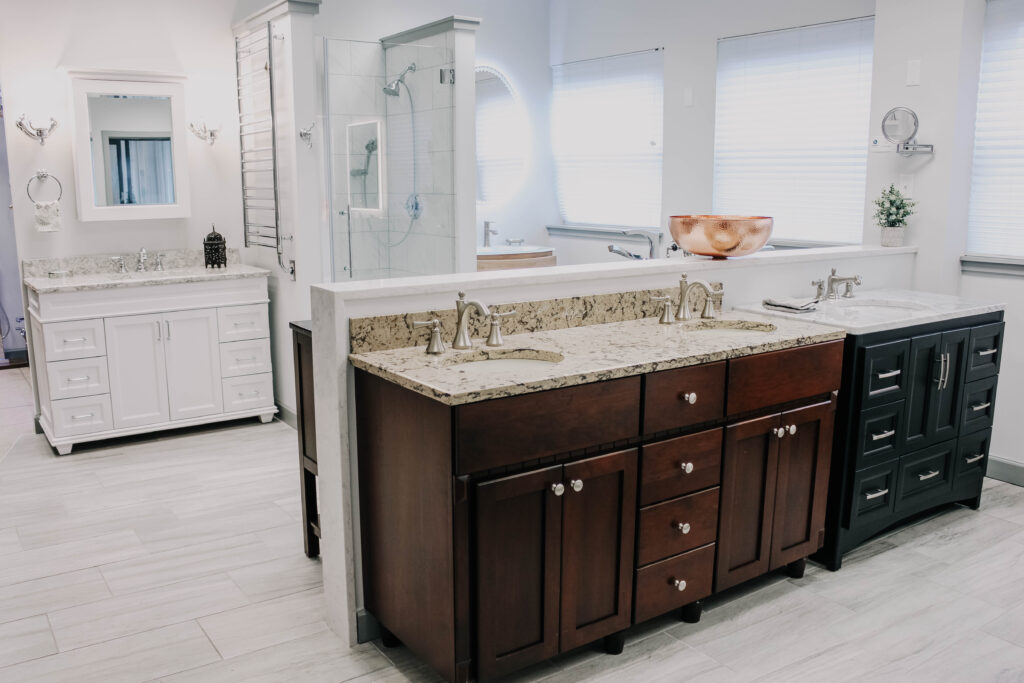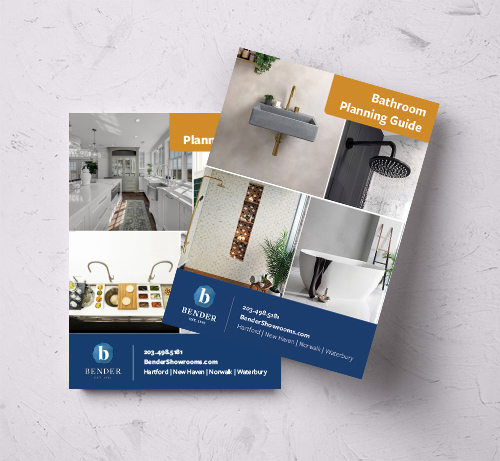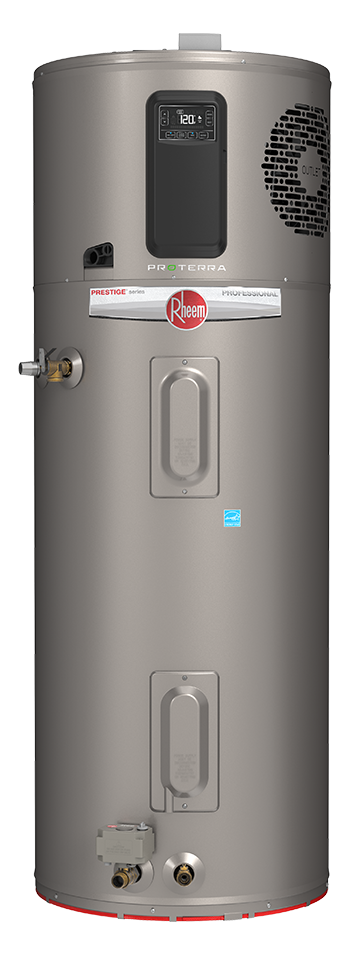More and more consumers are choosing environmentally friendly products and solutions for their homes. In fact, a recent survey found that “64% of Americans are willing to pay more for sustainable products” and “78% are more likely to purchase a product that is clearly labeled as environmentally friendly.”
To that end, designing or remodeling a bathroom offers an impactful place in which to choose environmentally friendly options. Since the bathroom is where most household water consumption comes from, homeowners stand to help reduce environmental impact when designing thoughtfully.
Plus, these choices can benefit your pocketbook as well: choosing eco-friendly products can help cut down on water and energy usage that helps save costs in the long run.
Here are a few significant ways to thoughtfully design a beautiful, eco-friendly bathroom.
THE FAUCETS + SHOWERHEAD
Since water usage is the main environmental “culprit” in the bathroom, thinking through the way you utilize water is the first step in creating an eco-friendly design. Luckily, this is also a relatively simple change to make—even if you’re not doing a complete bathroom remodel.
First, consider adding an aerator to your shower head and your faucets. Aerators add air to the water stream so that less actual water is used to create a strong flow of water. They reduce the amount of water that is used each time you utilize the sink, bathtub, or shower, which makes a significant difference over the years.
Similarly, choosing a low-flow showerhead or faucet makes a difference when it comes to water usage. Low-flow options reduce the amount of water that flows out of the shower head or faucet any time it’s in use. With today’s improved technology, the water pressure doesn’t have to suffer when installing a low-flow product. For example, Kohler’s low-flow showerheads use their “Katalyst” technology that adds air to the stream, reducing the amount of water needed.

THE TOILET
In addition to conserving water when showering, bathing, or using the sink, choosing an eco-friendly toilet can also cut down on water consumption. According to Kohler, older toilets use roughly four to seven gallons of water per flush. With an eco-friendly model, this can be cut down to about 1.3 gallons per flush. Simply switching out your existing toilet for an eco-friendly model or choosing an eco-friendly model for your new build is a way to make a difference when it comes to water usage.
Another more sustainable option is to utilize a cleansing seat or a bidet instead of a traditional toilet. Bidets are popular across many countries, and they’re gaining popularity in the United States. They offer a cleaning solution that requires less toilet paper, so that consumers can cut down on the amount of toilet paper that they purchase.
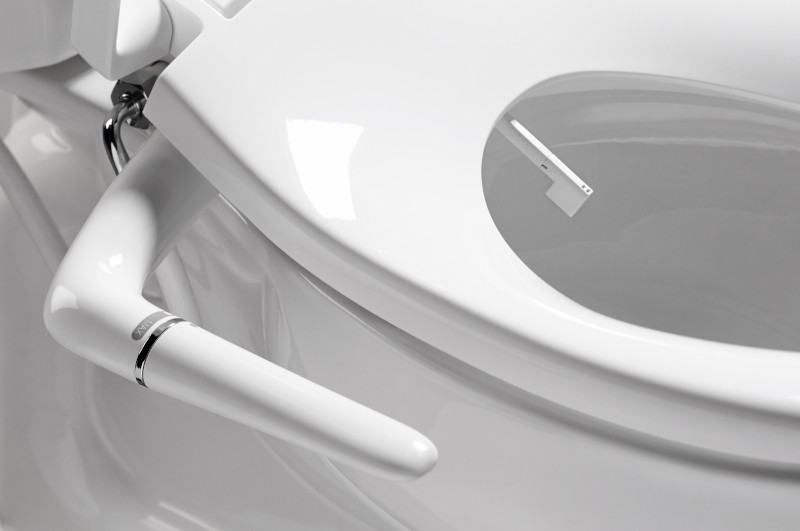
THE VANITY
The bathroom vanity also offers the opportunity to choose an eco-friendly product rather than a less sustainable option. When selecting a new vanity, choose a manufacturer that utilizes sustainable materials in their construction. We recommend ensuring that the wood that was used to build it was certified by the Forest Stewardship Council. They are an organization that certifies that the wood use has been sustainably sourced, so you know that you’re purchasing a more environmentally friendly product.
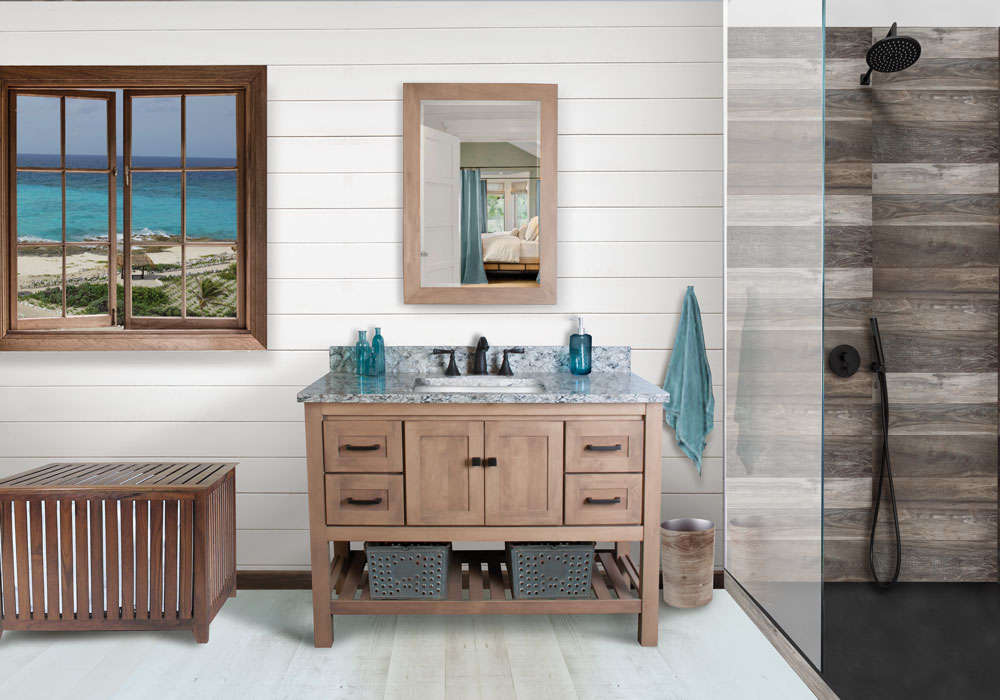
THE TILE + STONE
The vast amount of tile and stone on the market these days means that consumers have a prime opportunity to choose environmentally friendly materials for a bathroom. Choosing a natural stone, rather than a man-made option, is better for the environment. Plus, natural stone is a way to make your bathroom feel timeless and classic.
Similarly, tile comes in various eco-friendly and recyclable materials like glass and porcelain. Selecting these options when designing your bathroom and floor and shower walls can make a difference for the earth as well. Our Bender showroom consultants can guide you to the options that are the friendliest for the environment.
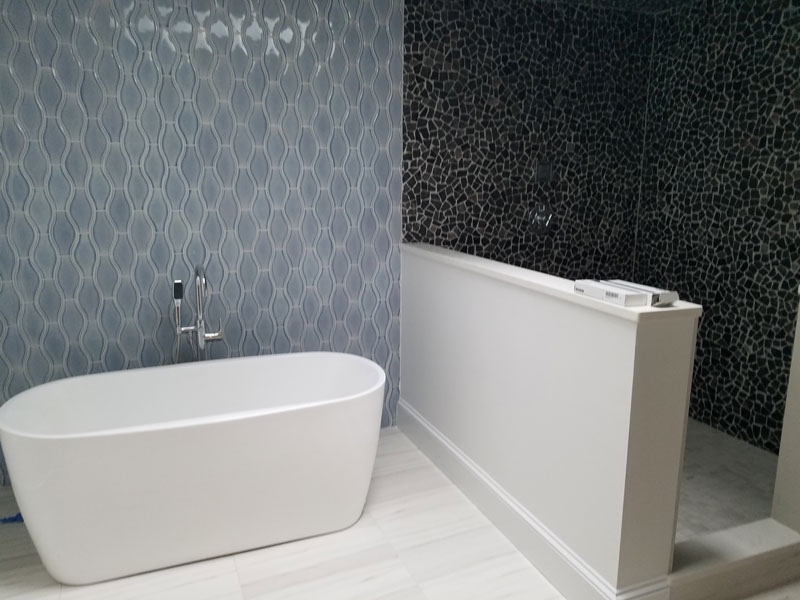
THE WATER HEATER
Finally, thinking through how you heat your home’s water can make a difference for the environment. Energy efficient water heaters typically heat without burning fuel, so they emit fewer harmful emissions. Installing an energy efficient water heater can reduce the amount of energy used when heating your water, and this in turn helps you save on utility costs as well.


